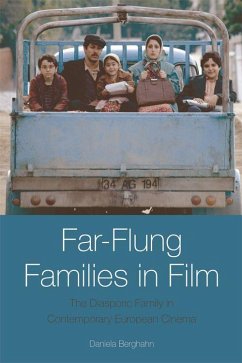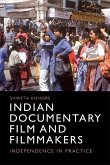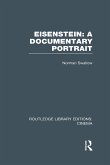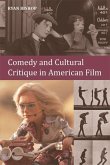This book will provide original analyses of diasporic feature films that offer sustained discussions of the family, including such well-known examples as Bend It Like Beckham and East is East, as well as productions confined to the art house and film festival circuits: Le the au harem d'Archimede, La graine et le mullet, Bullet Boy and Die Fremde. Internationally significant Hollywood and Bollywood films in which the diasporic family takes centre stage provide further comparative contexts and reference points."
'Far-Flung Families in Film explores the conflicted tensions sustaining its key terms "diasporic" and "family". Giving full scope to the centrifugal and centripetal forces at work, Daniela Berghahn admirably proves that the "transnational turn" has energized not only filmmakers, but invigorated debate among the academic community as well.' Thomas Elsaesser, author of European Cinema: Face to Face with Hollywood 'Daniela Berghahn provides a timely, wide-ranging, and engaging analysis of diasporic family films made by key directors from around the world living in Europe and identifies a new European cinema in the new multicultural Europe.' Hamid Naficy, author of An Accented Cinema: Exilic and Diasporic Filmmaking Why have films with diasporic family narratives increased in popularity in recent years? How do representations of the diasporic family differ from those of more dominant social groups? How does diasporic cinema negotiate the conventions of film genres commonly associated with the representation of the family? In the age of globalisation, diasporic and other types of transnational family are increasingly represented in films such as East is East, Le Grand Voyage, Almanya - Welcome to Germany, Immigrant Memories, Couscous, When We Leave, Monsoon Wedding and My Big Fat Greek Wedding. While there is a significant body of scholarship on the representation of the family in Hollywood cinema, this is the first book to analyse the depiction of Black and Asian British, Maghrebi French and Turkish German families from a comparative transnational perspective. Drawing on critical concepts from diaspora studies, anthropology, socio-historical research on diasporic families and the burgeoning field of transnational film studies, this book is an essential read for Film Studies scholars and students who are researching families and issues of race and ethnicity in cinema, the media and visual culture. Daniela Berghahn is Professor of Film Studies at Royal Holloway, University of London. Her previous publications include Hollywood behind the Wall: The Cinema of East Germany (2005) and European Cinema in Motion: Migrant and Diasporic Film in Contemporary Europe (co-edited, 2010). Cover image: Almanya - Welcome to Germany (Yasemin Samdereli, 2011) (c) Roxy Film / Christian Hartmann. Cover design: [insert logo file] www.euppublishing.com
Hinweis: Dieser Artikel kann nur an eine deutsche Lieferadresse ausgeliefert werden.
'Far-Flung Families in Film explores the conflicted tensions sustaining its key terms "diasporic" and "family". Giving full scope to the centrifugal and centripetal forces at work, Daniela Berghahn admirably proves that the "transnational turn" has energized not only filmmakers, but invigorated debate among the academic community as well.' Thomas Elsaesser, author of European Cinema: Face to Face with Hollywood 'Daniela Berghahn provides a timely, wide-ranging, and engaging analysis of diasporic family films made by key directors from around the world living in Europe and identifies a new European cinema in the new multicultural Europe.' Hamid Naficy, author of An Accented Cinema: Exilic and Diasporic Filmmaking Why have films with diasporic family narratives increased in popularity in recent years? How do representations of the diasporic family differ from those of more dominant social groups? How does diasporic cinema negotiate the conventions of film genres commonly associated with the representation of the family? In the age of globalisation, diasporic and other types of transnational family are increasingly represented in films such as East is East, Le Grand Voyage, Almanya - Welcome to Germany, Immigrant Memories, Couscous, When We Leave, Monsoon Wedding and My Big Fat Greek Wedding. While there is a significant body of scholarship on the representation of the family in Hollywood cinema, this is the first book to analyse the depiction of Black and Asian British, Maghrebi French and Turkish German families from a comparative transnational perspective. Drawing on critical concepts from diaspora studies, anthropology, socio-historical research on diasporic families and the burgeoning field of transnational film studies, this book is an essential read for Film Studies scholars and students who are researching families and issues of race and ethnicity in cinema, the media and visual culture. Daniela Berghahn is Professor of Film Studies at Royal Holloway, University of London. Her previous publications include Hollywood behind the Wall: The Cinema of East Germany (2005) and European Cinema in Motion: Migrant and Diasporic Film in Contemporary Europe (co-edited, 2010). Cover image: Almanya - Welcome to Germany (Yasemin Samdereli, 2011) (c) Roxy Film / Christian Hartmann. Cover design: [insert logo file] www.euppublishing.com
Hinweis: Dieser Artikel kann nur an eine deutsche Lieferadresse ausgeliefert werden.








